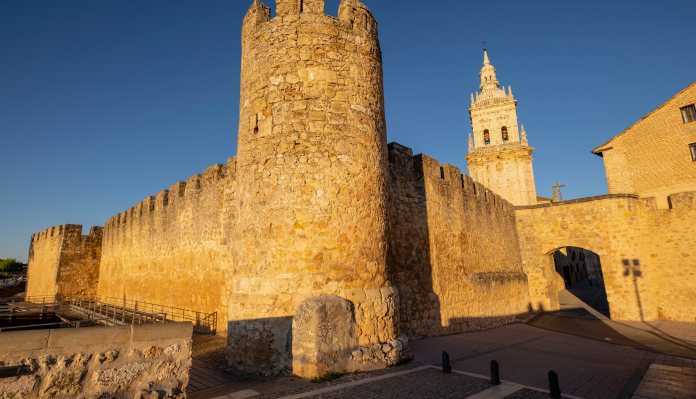Castillo de San Miguel
-
0
 Comments
Comments
- Last updated: 19/06/2023

The history of Spain spans thousands of years, during which time, the country experienced many cultural changes, ranging from the Roman Empire to the Moors from North Africa, each of which left behind a legacy. Many of the influences from those times still remain to be seen today in the architecture and food. But nowhere more is this evidence to be seen than in the many historical locations, especially the castles.
One castle where all these aspects can be seen is Castillo de San Miguel (St Michael in English). It is located at Almuñécar, lying in the southern region of Granada, on the south coast, and looking across the entrance to the Mediterranean Sea. Dating from the first century BC, the castle stands on an elevated plateau just inland from the coast, from where it dominates the area. At the height of its power, and from this position, it would have made an imposing feature.
Today, it is a place that visitors can walk to, and see how the Phoenicians first used the position on the coast as part of their trade network as early as the 8th century BC. In turn, the Romans settled the site and later Arabic influences were introduced into the defences to keep pace with the changes in military development. A small model is displayed in the on-site museum exhibition which shows the various stages of development in the castle’s history.
The hill on which it stands is known as San Miguel Cerro (St Miguel’s peak) and it overlooks the town of Almuñécar. With its steep approach routes to the summit, it was developed into a trading and military base by the Romans during the first century BC, over 2,000 years ago. In those days, Spain was an important region for the production of wheat, so much so that the country was known as the ‘granary of the Roman empire’. When the Romans departed, they left behind an indelible legacy across Spain in the form of roads and defences, such as those at Almuñécar. These would later be used and built on by societies which followed in their wake, including the Muslim Nasrid dynasty.
The Nasrids, with their Arab origins, brought with them irrigation technology and even installed a waterwheel within the walls of the castle. They also used different building techniques to construct walls, which extended to include three gateways, along with 40 towers for defence, and a dungeon. The castle was never particularly large, compared to other fortifications, but it would retain a certain importance throughout its history.
At this stage, the castle’s defences were laid out following a quadrilateral pattern, which included square-sided towers. The walls were built using an Arab-style building method known as ‘taipal’, which was a form of compacted earthwork, baked hard by the sun. First, a wooden framework was built, into which loads of earth were tipped in layers of 100 to 150mm, and then pounded. This provided some defence against catapults hurling stones, but when gunpowder was introduced, this type of defence was useless. A later phase of the castle saw these walls replaced by those built of brick and stone, and examples of this can be seen in exposed sections of the walling.
During the 16th century, the castle reverted to Spanish control. In the time of the reign of King Ferdinand, the main gate entrance was created, including four round towers for strength, and the dry moat was built. Unfortunately, the keep which was built during this period has long since disappeared, but it is possible through interpretation to work out how it may have appeared. It was from this period, and through the 17th century, that gunpowder artillery was installed at the castle. Alterations were made to accommodate these weapons, including firing positions on the south and west defences. This meant that they could engage naval targets or be directed against attacks from inland.
During the 19th century, British and Spanish troops fought against the French, turning the country into a battleground during the Peninsular War. In 1808, British ships of the Royal Navy fired on the site, but any damage done at the time has been covered over by repairs and renovation work, which were completed in the 1990s.
The small museum contains fragments of armour from the 16th century, along with barrels of artillery pieces from that period, also. Excavation work has revealed a Roman hypocaust for heating baths, plus other features, which were added during what is called the Arab period.
Today, the castle is in very good condition and attracts many visitors. Much of what is to be seen dates from the Arab period, between the 8th and 13th centuries. It is believed that parts of the site may even predate the Roman occupation. There are five aqueducts built by the Romans crisscrossing the area, four of which still carry water for irrigation after 2,000 years. The castle fell into disuse in the 19th century, but in 1931 it was declared a national monument. In 1985, its status was elevated when it was declared to be a site of cultural interest. It attracts thousands of tourists who come to see the displays and archaeological features in parts of the grounds, which until the 1970s, were used as a cemetery.
For military enthusiasts, this is a great place to visit, to see not only the development from pre-gunpowder into the gunpowder age but also how different cultures influenced defence designs. Details of facilities and times of opening to this fascinating site can be found at www.amunecarinfo.com
